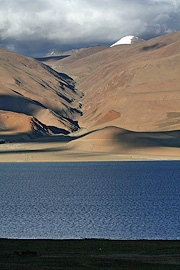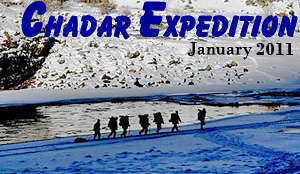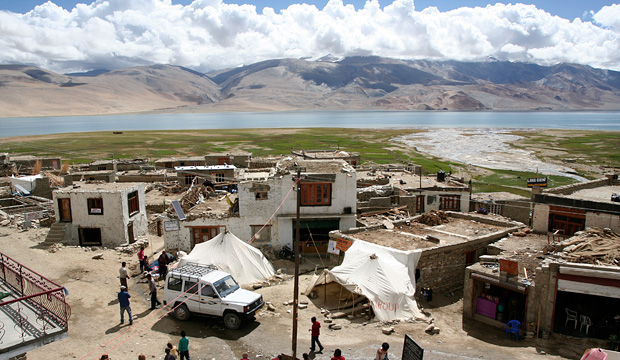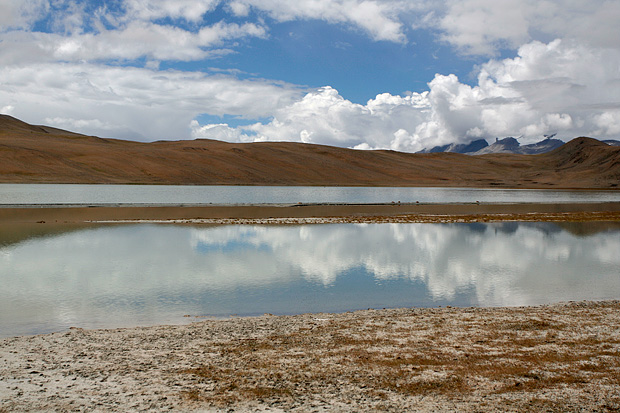 It has been more than a year since I started writing a travelogue series on my travels and experiences in Ladakh. When I began writing these stories, I was determined not to make it a quick travelogue about where I went, what I did or what I saw. I wanted it to be a comprehensive compilation of my experiences of this remote region, my understanding of its culture and observation about its people. Of course, this would go hand in hand with description of all places that I visited—pretty much all the well-known locations—in Ladakh. With a lot of things to tell, the story did not end quickly and went on for a long time. Now the series is more than a year old and has seen more than 40 posts in the last twelve months. Yet, I am only half way with my travelogues. I thought it would be a good time to look back into posts written so far and make a compilation of them in one place. Also, if you like to read the entire story in one go, it begins from here, with each post having navigation links to next and previous posts.
It has been more than a year since I started writing a travelogue series on my travels and experiences in Ladakh. When I began writing these stories, I was determined not to make it a quick travelogue about where I went, what I did or what I saw. I wanted it to be a comprehensive compilation of my experiences of this remote region, my understanding of its culture and observation about its people. Of course, this would go hand in hand with description of all places that I visited—pretty much all the well-known locations—in Ladakh. With a lot of things to tell, the story did not end quickly and went on for a long time. Now the series is more than a year old and has seen more than 40 posts in the last twelve months. Yet, I am only half way with my travelogues. I thought it would be a good time to look back into posts written so far and make a compilation of them in one place. Also, if you like to read the entire story in one go, it begins from here, with each post having navigation links to next and previous posts.
Go to list of posts of travel to ladakh and a get a glimpse of what more to come. I would also look forward to knowing your comments and feedback on the stories so far, and how you would like to see the series go forward.
Also: see details of Chadar Expedition in January 2012, lead by tour leader Manish Lakhani
 Some of you might remember a post on this blog a year ago about the images of Chadar Trek. Chadar Trek is an expedition of walking on ice when Zanskar River (in Ladakh) freezes over. The sheet of ice, called Chadar, is an ancient winter route that connects people of Zanskar with rest of Ladakh.
Some of you might remember a post on this blog a year ago about the images of Chadar Trek. Chadar Trek is an expedition of walking on ice when Zanskar River (in Ladakh) freezes over. The sheet of ice, called Chadar, is an ancient winter route that connects people of Zanskar with rest of Ladakh.
Manish, whose images were published in this blog earlier, conducts Chadar expedition with the help of expert local guides every year. The next expedition is scheduled from 22nd January to 6th February 2011. I was planning to join the trek last year, but had to stay back to address some commitments. I am hoping to part of the group departing in January 2011.
Registration for the trek is now open. If you wish to join the expedition, read more on Chadar Trek and sign up. Manish will respond to your queries, if you have any, about the expedition.
“Where is the bathroom?” I asked the girl who showed me a room in her guesthouse. She had a beautiful room with lot of space and a thick bed with colourful sheets on it. The insides were sparsely furnished, but whatever existed was tastefully decorated with a dash of traditional Ladakhi paintings. I loved the place and would have been happy to stay there for the next five days of my stay at Korzok Village. But her face fell the moment when I asked her about bathroom. “No bathroom,” she said and led me down the stairs. Pointing to a steel basin and a vessel full of water on the ground, she helpfully indicated that we can wash our hands and face there, but there aren’t any bathrooms.
I wasn’t exactly ready to stay in a room with no bathing facilities, but had anticipated for guesthouses to not have bathrooms. At Pangong Lake only a few days ago, a home-stay owner had shrugged when we asked for a bathroom and pointed in the direction of the lake. We were finally lucky to find a place with a bath at Pangong. But here in Korzok Village deeper inside Changthang Plateau, where our options of accommodation were a choice of expensive luxury tents and basic guesthouses, I wasn’t sure if there was something of a compromise between the two that offered a place to wash ourselves.

Korzok Village
Changspa (chanspa, chang pa), the people of Changthang, do not exactly think freshening up everyday is one of their priorities. The winter here is so harsh that temperatures dip below -30C, while summer is a terribly busy season when they spend every second of waking time busy working. In a place where there is no plumbing, no running water and no electricity, a bath is a great effort and doesn’t figure high in the list of things to do. And when you have a 12,000 hectare deep blue lake only a stone’s throw away from where you live, you don’t really need a bathroom for that once-in-a-while bathing ceremony.
But spending four days without bath was not exactly something I fancied. Every other house in Korzok has a ‘home-stay’ sign hanging in front of it, but not too many of them came with bathrooms. We must have spent a good thirty minutes before finding one that fit the bill – a simple room with a washroom.
Earlier in the day, we had started from Leh early in the morning, making the long and monotonous journey upstream Indus to Tso Moriri. Passing through now-familiar road that took us till Upshi, where a road deviated towards Manali, we drove further upstream where the river becomes narrow and swift, while the mountain slopes became steeper. Good roads allowed us to cover the distance quickly as we passed through barren landscapes and occasional villages with a dash of greenery around them. Stopping at Chumathang briefly for a cup of tea we did not want to drink next to a hot-spring that we did not want to see, we continued towards Mahe Bridge, where the road cuts across Indus and enters the Changthang Plateau.
Passing through Tso Kiagar, a small lake that we see an hour before, we arrived at Tso Moriri at 2pm to see a large expanse of superb blue colours of the lake, its other end far enough to be not visible. Our road skirted the lake shore, where a bar headed geese drifted gently in the waters, tailed by its five inquisitive chicks. Korzok Village was visible a few kilometers away, located on a slope just above the lake.

Tso Kiagar Lake
Korzok is a small village with perhaps fifty families living on the bank of Tso Moriri. As in every Ldakhi Village, a monastery and a bunch of haphazard chortens higher up the slopes dominated the village. The place looked like work-in-progress, akin to our larger cities, with lot of construction in progress either to modernize their dwellings or to build more accommodation for tourists. At 225km from Leh, Korzok is far from any large town and is yet to see modern facilities like electricity and regular public transport. The approach to the village is getting better by the years and a tarmac road now ends just half an hour before the village. It would be a matter of few years before the village gets to inhale the first smell of tarmac.
I spent the first day at Korzok lazing in the room and staring at the lake from my window for a few hours and then sauntering in the village in the evening hours. The next few days were to be spent exploring the village, watching a monastic festival and visiting the nomad herders of changthang plateau.
+ Also see: Drive from Leh to Tso Moriri and conversations with driver Rigchen
+ Map of Korzok Village and places on the way from Leh to Tso Moriri.
View Leh to Tso Moriri in a larger map
 It has been more than a year since I started writing a travelogue series on my travels and experiences in Ladakh. When I began writing these stories, I was determined not to make it a quick travelogue about where I went, what I did or what I saw. I wanted it to be a comprehensive compilation of my experiences of this remote region, my understanding of its culture and observation about its people. Of course, this would go hand in hand with description of all places that I visited—pretty much all the well-known locations—in Ladakh. With a lot of things to tell, the story did not end quickly and went on for a long time. Now the series is more than a year old and has seen more than 40 posts in the last twelve months. Yet, I am only half way with my travelogues. I thought it would be a good time to look back into posts written so far and make a compilation of them in one place. Also, if you like to read the entire story in one go, it begins from here, with each post having navigation links to next and previous posts.
It has been more than a year since I started writing a travelogue series on my travels and experiences in Ladakh. When I began writing these stories, I was determined not to make it a quick travelogue about where I went, what I did or what I saw. I wanted it to be a comprehensive compilation of my experiences of this remote region, my understanding of its culture and observation about its people. Of course, this would go hand in hand with description of all places that I visited—pretty much all the well-known locations—in Ladakh. With a lot of things to tell, the story did not end quickly and went on for a long time. Now the series is more than a year old and has seen more than 40 posts in the last twelve months. Yet, I am only half way with my travelogues. I thought it would be a good time to look back into posts written so far and make a compilation of them in one place. Also, if you like to read the entire story in one go, it begins from here, with each post having navigation links to next and previous posts. Some of you might remember a post on this blog a year ago about the images of
Some of you might remember a post on this blog a year ago about the images of 
